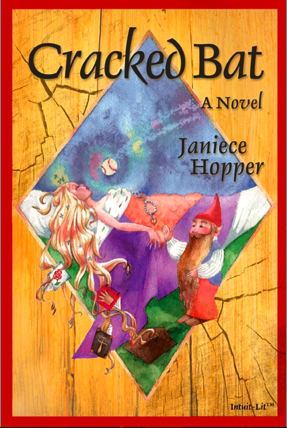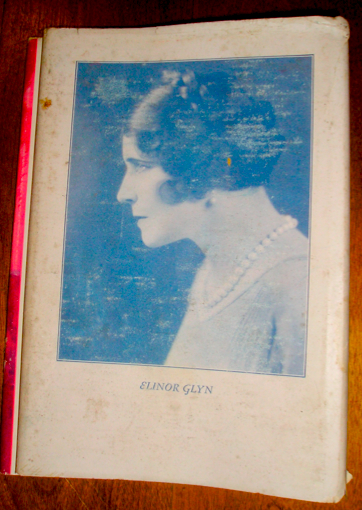I was thinking about you, dear readers, earlier today at an opera rehearsal — hey, I move in some pretty rarified circles. Specifically, I found myself musing about our recent discussions of plausibility in interview technique — as the singers belted their characters’ deepest and darkest toward the back wall of the auditorium. I must have been giggling under my breath, for in the middle of an aria, my SO leaned over to me and whispered, “They can’t have been reading your blog lately.”
Obviously, the composer hadn’t — not entirely surprising, as the music in question first hit the pop charts in the middle of the 17th century; I doubt its author blog-surfed much.
The moment I got home, I rushed straight to my computer and started rifling through my archives — a practice I highly encourage; there’s quite a bit of information stacked in the back room of this blog, you know — because I had a distinct recollection of having written on this very topic sometime last year.
As it turned out, I was right: my last spring’s opera intake included sitting through a classic bad interview scene. Take a listen:
The brave knight Ruggiero, ensnared by the love spells of the evil sorceress Alcina (who had a nasty habit of turning her exes into trees; opera gives one a lot of room for imaginative touches), has deserted both his fighting obligations and his warrior girlfriend, Bradamante. So another sorceress, Melissa, turns herself into an image of Ruggiero’s father, Atlante, to try to free him. Dressed as Atlante (and turning from an alto into a baritone for the occasion, a nifty trick), Melissa berates Ruggiero for lying around in sensual bliss when there’s work to be done.
A single three-minute solo later, Ruggiero’s mind is changed, with no argument from the big guy himself: he is free from the spell, and goes on to bellow some extraordinarily nasty insults at Alcina while Punchinello dances around with a squid.
You had to be there, I guess. It was quite entertaining; the squid was played by a hand puppet. It was also not very good storytelling — and even worse character development.
This type of persuasion in an interview scene — where the protagonist’s mind is changed on an issue about which he is supposedly passionate simply because someone TELLS him he’s wrong, without engaging in convincing argument — occurs in novel submissions more often than you might think. Many a protagonist who is downright tigerish in defense of his ideals elsewhere in the book is positively lamblike when confronted by a boss, a lover, a child, etc. who points out his flaws.
And that, unfortunately, makes the conflict seem much less important than if the characters argue the pros and cons at least a little. Usually, the result is a more compelling scene — and better character development for the arguers.
Oh, heck, I’ll go out on a limb here: it’s almost always better storytelling.
Why? Everybody chant it together now: because conflict is more interesting in a scene than agreement. Unending harmony, as delightful (and rare) as it may be in real life, can be a real snooze-fest on the page.
Even the injection of just a little good, old-fashioned passive-aggression can ginger up a scene no end.
Nor does being easily persuaded, non-confrontational, or generally — brace yourself — nice necessarily render a protagonist (or any other character) more likeable to the reader. No, not even if the reader happens to enjoy the company of such sterling souls in real life.
Why, you cry? Because endlessly making nice tends to kill dramatic tension dead, dead, dead.
That seems to come as a surprise to many aspiring writers, judging by the number of first novels and memoirs where the protagonist bends over backwards never to offend anyone — especially common in manuscripts where the protagonist happens to be female, I notice. Butter wouldn’t melt in some of these ladies’ mouths, as the saying goes.
Which pretty much inevitably results in either a relatively conflict-free plot or a passive protagonist who stands on the sidelines while the less scrupulous (and more interesting) characters act.
To give you some time to digest that particularly bitter little pill — don’t worry; I shall be returning to the problems of the passive protagonist next week — allow me to turn my opera example to another use: to show yet another way in which a screener might read an opening scene differently than another reader.
This object lesson should be a bit easier to swallow. Take this little test: quick, without re-scanning the paragraphs where I glossed over the opera’s plot, try to name as many of its characters as you can.
How did you do?
I originally mentioned six, but don’t be hard on yourself if you only came up with one or two. Most readers would have experienced some difficulty keeping all of those sketchily-defined characters straight.
Heck, seeing them introduced en masse like that, I would have trouble remembering who was who, and I’ve seen the opera!
Introducing too many characters too fast for any of them to make a strong impression upon the reader is EXTREMELY common in the opening few pages of novel submissions. Indeed, sometimes there are so many people lurching around that the reader does not know for several paragraphs, or even several pages, which one is the protagonist.
Why might confusion on this point be problematic? In a word: Millicent.
Agency screeners read fast; if they aren’t sure what’s going on and who the book is about by the middle of page 1 (which is, unfortunately, how they would tend to diagnose the paragraphs above), they generally stop reading.
To use Millie’s favorite word: next!
So strategically, you might want to limit the number of characters introduced within the first couple of pages of your submission. If you’re in doubt about how many is too many — no, Virginia, there is no hard-and-fast rule — there are a couple of tests I like to use.
The first, and the simplest, is a modification of the one I used above: hand the first page to a non-writer. (NOT a relative, lover, or someone with whom you interact on a daily basis, please; these folks’ desire to see you happy may well skew the results of the test.) Ask her to read through it as quickly as possible. As soon as she’s finished, reclaim the manuscript. Then take her out to coffee and ask her to tell you who the main character is and what the book is about.
Why did I specify a non-writer, you ask? Because writers tend to be unusually good at absorbing character names; the average reader is not. Thus, the latter is a better barometer for submission purposes, at least for this particular issue.
Seem counter-intuitive? Think about it: your garden-variety agency screener scans far too rapidly, and reads far too many submissions in a given day, to retain the name of any character who has not either been the subject of extensive description — which, as we’ve been seeing over the past few days, can be problematic in itself — or a mover or shaker in the plot.
Oh, look: the question of protagonist passivity has popped its winsome little head out of its gopher hole again. Can’t imagine how that happened.
I sense some discomfort out there, don’t I? “But Anne,” some intrepid submitters protest, “weren’t you telling us just the other day that professional readers resent having things over-explained? Assuming that they’re smart enough to follow a complex plot, wouldn’t they be able to remember any character I’ve named? After all, even if Millicent forgot who Nicodemus was by the bottom of page 5, she’d merely have to flip back to page 1 to remind herself.”
Oh, I’m glad you asked this question, intrepid submitters. If you take nothing else from today’s post, cling to what I’m about to say next with the tenacity of an unusually stubborn leech:
In preparing ANY manuscript for professional submission, make it your mission to assure that a screener NEVER has to flip back to remind herself who was who or what just happened.
The simple fact is that very few professional readers will take the time to do it. Our old pal Millicent has a lot on her mind, you know — like that too-hot latte that just burned her full pink lip. (You’d think, after how long I have been writing about her, that she would have learned by now to let it cool, wouldn’t you? But that’s an agency screener for you: time is of the essence.)
No, but seriously, folks, most aspiring writers make the mistake of assuming that their submissions will be read slowly, with meticulous care. But Millicent might have 50 submissions to screen between now and the end of the day — you do the math.
The other test for a reasonable character-to-page ratio — and perhaps a better one, as it is also useful to see how well your storytelling skills are coming across: hand the entire first scene to that non-writer and ask her to read it as quickly as possible, to reproduce Millicent’s likely rate of scanning. Then take away the pages and talk with her about something else entirely for ten minutes.
In minute eleven, ask her to tell you the story of that first scene with as much specificity as possible. Note which names she can and cannot remember — if she’s like 99% of skimmers, she will probably remember only the two primary ones.
After thanking her profusely, sit down with your list of passed-over names and the manuscript: do all of these folks really HAVE to make an appearance in the opening scene? Could some of them be consolidated into a single character, to reduce the barrage of names the reader will have to remember?
Or could any of them be there, but not mentioned until later in the book, where the protagonist encounters that character again? (A simple statement along the lines of, “Hey, Clarence, weren’t you one of the thugs who beat me to a pulp last month?” is usually sufficient for later identification, I find.)
Alternatively, are some of the characters mentioned here for purely photographic reasons? In other words, is their being there integral to the ACTION of the scene, or are the extraneous many named or described simply because they are in the area, and an outside observer glancing at the center of action would have seen them lurking?
In a screenplay, you would have to mention their presence, of course — but in a crowd scene in a novel, describing the mob as monolithic can have a greater impact. For instance, which sounds scarier to you, Mr. Big threatening Our Hero while surrounded by his henchmen, Mannie, Moe, and Ambrose — or surrounded by an undifferentiated wall of well-armed baddies?
Personally, I would rather take my chances with Ambrose and Co. than with the faceless line of thugs, wouldn’t you? My imagination can conjure a much scarier array of henchmen than the named three.
I know, I know: when you create a novel, you create the world in which your characters live. And that world is peopled. But in the interest of grabbing an agency screener’s often mercurial attention, would a smaller cast of characters, at least at the outset, render your book more compelling?
Sometimes, less is more. Or at any rate, fewer. Keep up the good work!


















